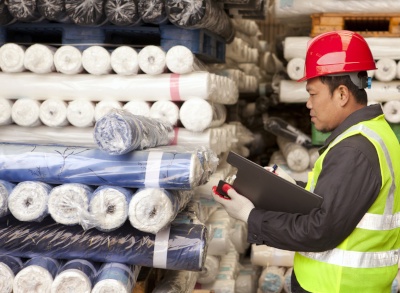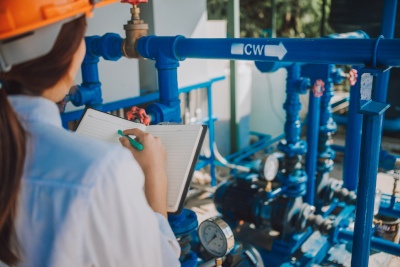 When is the right time to visit your overseas supplier? Do you need to plan a supplier visit just for supervising product inspections?
When is the right time to visit your overseas supplier? Do you need to plan a supplier visit just for supervising product inspections?
Depending on a variety of factors, your answer to the questions above might be a resounding “I need to visit my suppliers right now”. But it also might be “I don’t see any clear benefits to my business of visiting my suppliers at this time”.
Supplier visits play a vital role in the relationship between most importers and their manufacturers. Seeing the factory in person can help you better understand production processes and address specific quality concerns. Visiting your suppliers can also help them better understand your specific requirements and improve future communications.
An in-person visit might be worthwhile, or even essential, to developing your relationship with an overseas supplier in some cases. But there are times when the costs may outweigh the value you get from visiting your supplier. So before you hop on an international flight, let’s look at five reasons for or against visiting your suppliers.
1.Visit new suppliers to develop a strong relationship
The first reason you might want to visit a supplier is probably the most obvious. Visiting can help you build a stronger relationship with a supplier that’s located thousands of miles away. Talking face-to-face is often the best way to get to know each other’s expectations and requirements without needing to rely so much on repeated emails and phone calls.
There’s no telling how many buyers and purchase orders a typical supplier may be juggling at any given time. Visiting your supplier early on in the relationship can help ensure your PO doesn’t slip to the bottom in a pile of others that take priority. Establishing a strong relationship with your supplier can lead to:
- Higher product quality, by helping to establish expectations and address previous quality issues
- Smoother communication and less pushback, by getting your supplier’s feedback on the feasibility of production deadlines, quality standards and inspection requirements
- More competitive pricing and fewer delays,
 as a supplier might prioritize your order over other orders from buyers they have no established connection with
as a supplier might prioritize your order over other orders from buyers they have no established connection with
Meet with factory management during your visit, as they drive your relationship in a decision-making role. But if possible, also consider meeting with QC personnel to establish production standards and observe quality control procedures.
Keep in mind that QC personnel, and even factory management, at factories in Asia often aren’t proficient in English. It can be helpful to bring a native translator that has manufacturing experience along with you. If you’re working with a third-party inspection firm, that firm may be able to provide a translator for factory visits at a small fee.
2. Conduct an informal audit of the factory yourself
A professional audit can tell you a lot about a factory with details ranging from material storage and quality control, to social compliance, security and environmental impact. But you don’t have to be an experienced auditor to get a basic sense of a factory’s capabilities. And even conducting an informal audit yourself can help you avoid major problems later.
You may be surprised by how many suppliers on Alibaba and elsewhere claim to be a large, established manufacturer when, in reality, their “factory” consists of ten unskilled people doing imprecise soldering work out of a dingy, one-room apartment. Visiting the factory when working with a supplier for the first time helps you avoid working with an unqualified supplier and gives you a basic feel for their true production capabilities.
The purpose of an informal audit is to give you an overall idea of the supplier and check their capabilities before investing in an order. During your visit, you might:
- Assess whether they have all of the necessary equipment and facilities on site to manufacture your product. For example, is it clear they only do final assembly and are outsourcing production of key components and parts to sub-suppliers?
- Assess cleanliness and organization of storage facilities for raw materials and finished units. Could conditions in the storage areas be negatively impacting the quality of the finished goods?
- View product samples for your or similar products for other customers, to gauge production and quality capabilities. What’s the condition of goods as they come off the production line?
 Suppliers enticed by an order sometimes overstate their experience and overpromise what they can deliver to prospective buyers. A supplier that isn’t expecting you or a third party to visit their facility might even produce the order in a different factory than they communicated to you initially.
Suppliers enticed by an order sometimes overstate their experience and overpromise what they can deliver to prospective buyers. A supplier that isn’t expecting you or a third party to visit their facility might even produce the order in a different factory than they communicated to you initially.
Ahead of your visit, be sure to clarify with factory management that you want to visit the actual manufacturing site. Factories might have other offices or showrooms where they don’t actually manufacture your product. And management may prefer to meet you at one of these to appear more professional, compliant or capable.
3. Visit a supplier to monitor production of large orders
There’s usually a greater investment riding on large orders than small ones. And the consequences of late shipments and quality problems are amplified with larger quantities. Higher stakes with larger orders often warrant being at the factory to personally monitor production.
Visiting your overseas supplier before production lets you review and establish golden samples to further solidify your requirements. But you’ll know more about the quality and pace of production if you’re present when production is underway.
If you visit your supplier too late in production, defects might already affect a large portion of the order, or the shipment may have fallen far behind schedule. Both issues are much easier to address at their first sign, rather than later when they’ve become more serious.
By visiting the factory as mass production begins, you’ll be able to check units as they come off the line with first-article inspection. If there are quality problems or nonconformances with your requirements, you can find and address those at the onset. And you’ll be limiting one of the major causes of production and shipping delays in the process.
Keep in mind you might have greater influence with a supplier you’re consistently placing large orders with. A factory will often prioritize your orders over smaller ones in order to keep your business. Visiting several times a year just to oversee production may be excessive in this case, even for larger orders.
4. Clarify expectations for customized products and new releases
When manufacturing abroad, customized products and newly designed products are often more prone to quality issues. Factories may not have enough experience with these new products to have established production standards and internal quality control procedures. This challenge can be compounded by cultural barriers and unfamiliarity with certain product types.
Product QC for complicated products is quite simply more complicated. When the supplier is unfamiliar with a product, it’s more difficult for them to identify and address quality issues without your guidance and feedback. If you don’t visit your supplier early on in production to address specifications and requirements, you might receive a shipment that doesn’t meet your expectations in the slightest.
Visiting your supplier before production to clarify expectations can be necessary when you have customized products and new releases. Depending on your experience and technical background, conversations about your product’s design can be far easier to have in person. You can review prototypes and samples to discuss any parts that raise concern and clear all uncertainties before mass production.
Take steps to protect your IP if you’re developing a new product. Chinese suppliers are increasingly entering the direct-to-consumer market and are actively scouting out new products on crowdfunding platforms, retail sites and social media platforms to copycat.
Visiting a supplier to develop a strong relationship is a helpful step to dissuade them from stealing your IP. But no matter how strong you think your relationship is, always take precautionary steps to legally protect your business.
5. Should you visit your supplier to supervise inspections conducted by a third party?
Just like importers commonly consider visiting suppliers to verify their capabilities, importers also often consider overseeing a third-party inspection.
Conducting some due diligence on a third-party inspection provider, as you would for a supplier, can make you more comfortable with the one you’re chosen. Professional QC companies should be able to provide customer references, sample reports and integrity documentation as evidence of their reliability and expertise.
If you’ve conducted your due diligence and clearly communicated your inspection requirements, you shouldn’t actually need to supervise third-party inspections.
It does take a bit of trust to allow a third party to take responsibility for inspection on your behalf. So let’s take a look at some of the common concerns among importers about supervising third-party inspection and why you might not actually need to.
Can the QC inspector really only inspect the quoted number of units in one day?
Like most importers, you probably want to get the most out of the time you pay for inspectors to be present at your supplier’s facility. This may mean pushing to inspect as many units as you think is possible in one day. But you may be overlooking other responsibilities of the inspector that can limit how many units they can inspect in a day.
Over the course of one man day, an inspector must:
- Travel from their home to the factory, sometimes for an hour or more
- Pull shipping cartons from the factory’s warehouse and unpack units
- Inspect each unit in the sample according to your inspection criteria and take photos
- Review inspection findings with a factory representative and get their signature on the report
- Write and compile the inspection report, which might take longer if you require a customized reporting format
 Inspection companies typically provide a few different inspection sampling plans for you to choose from based on international schemes like AQL. But that doesn’t always mean you’re stuck with whatever inspection plan they first provide. Professional third-party inspection providers can also accommodate a customized sampling plan in a number of ways by:
Inspection companies typically provide a few different inspection sampling plans for you to choose from based on international schemes like AQL. But that doesn’t always mean you’re stuck with whatever inspection plan they first provide. Professional third-party inspection providers can also accommodate a customized sampling plan in a number of ways by:
- Adjusting inspection scope, including the overall sample size for general checkpoints
- Adjusting AQL special inspection sample sizes for on-site testing
- Eliminating any specific checkpoints you don’t require
If the quoted sampling plan requires more time or comes at a higher cost than you expected, ask your provider what’s causing the higher cost. Maybe you’re less worried about some quality checkpoints than others, due to your experience with the product or supplier. You can request adjusting the sampling plan to fit your budget or requirements as needed (related: 5 Reasons for High Product Inspection Costs).
Do you need to oversee on-site testing?
Product testing can often require specialized equipment, professional training, precise measuring and skilled interpretation of testing results. You might feel better if you can physically train an inspector to follow the appropriate procedures yourself.
But with modern technology you can easily get assurance of accurate testing without needing to be present for the testing. Most third-party inspection companies can video record on-site testing at your request and send you the footage with the inspection report. You could also send an instructional video to the inspector showing how to check the products according to your procedure.
Another good way to ensure the accuracy of third-party inspection procedures is to create a detailed QC checklist with your product requirements and on-site testing. Give both your supplier and third-party inspector the opportunity to review the checklist and offer any feedback before production begins. In addition to a QC checklist, consider providing your inspectors with:
- Your purchase order
- Product photos
- Product and packaging artwork or drawings
- A golden sample
- Any known quality issues with the product
- Any other quality standards or regulations the product needs to meet
Together, all of these documents will help third-party inspectors inspect and test your products to your specific standards without the need for your in-person oversight.
Do you need to mediate between a third-party inspector and factory staff?
Some importers worry that, as the buyer and decision maker, if they’re not on-site for inspection, factory staff won’t cooperate with third-party inspectors. What if factory staff refuse the inspector access to facilities or production goods? Do you need to be on-site to “police” the factory and ensure cooperation?
After years of exporting abroad, most factories in Asia have experience working with third-party inspection companies and their procedures. Resistance to inspection is more common in the beginning of a buyer-supplier relationship when suppliers are less familiar with your requirements (related: What to Do When Factories Resist Inspection).
The key to ensuring a smooth inspection process is to adequately prepare the factory ahead of inspection. You can do this by:
- Sending your QC checklist and quality standards to your supplier to get their input and ensure that your expected quality levels are reasonable and achievable for the factory
- Informing your supplier of your requirement for third-party inspection, both verbally and in writing, like on your PO
- Sending your supplier an introduction to your inspection company by email ahead of the expected service date to ensure booking moves quickly and smoothly
Remember that only you can make final decisions on whether shipments should be released. Your third-party inspectors can’t compel your factory to hold a shipment, fix a quality issue or meet a production deadline. Understanding where your independent inspector’s power at the factory begins and ends will help you avoid conflict between the two parties.
Conclusion
If you do decide to visit your overseas supplier, don’t show up without preparing ahead of time. Ask yourself:
- What do I expect to get out of this trip?
- Can my problems be solved by means other than in-person?
- When are the best times of the year for a visit?
Make a list of any current suppliers you intend to visit and consider throwing a few potential suppliers into the mix as well. Map out their locations and determine the best order to visit them in. If you’re flying halfway across the world, you might as well maximize your time.
Once you’ve established a relationship with a supplier, an annual visit may be all you need. With a strong relationship and clear expectations, you’ve paved the way to handling future issues remotely. Barring any major issues, communication through email, phone or instant messaging should be enough to handle most day-to-day problems.
And don’t forget that your inspectors are an invaluable resource for monitoring production and managing product quality. Their regular reporting can save you a little time and money on unnecessary visits to your supplier, while still ensuring you get the product quality you desire.
How often do you visit your suppliers? How do you ensure your suppliers and inspectors meet your expectations remotely? Share your experiences in the comment section below!







